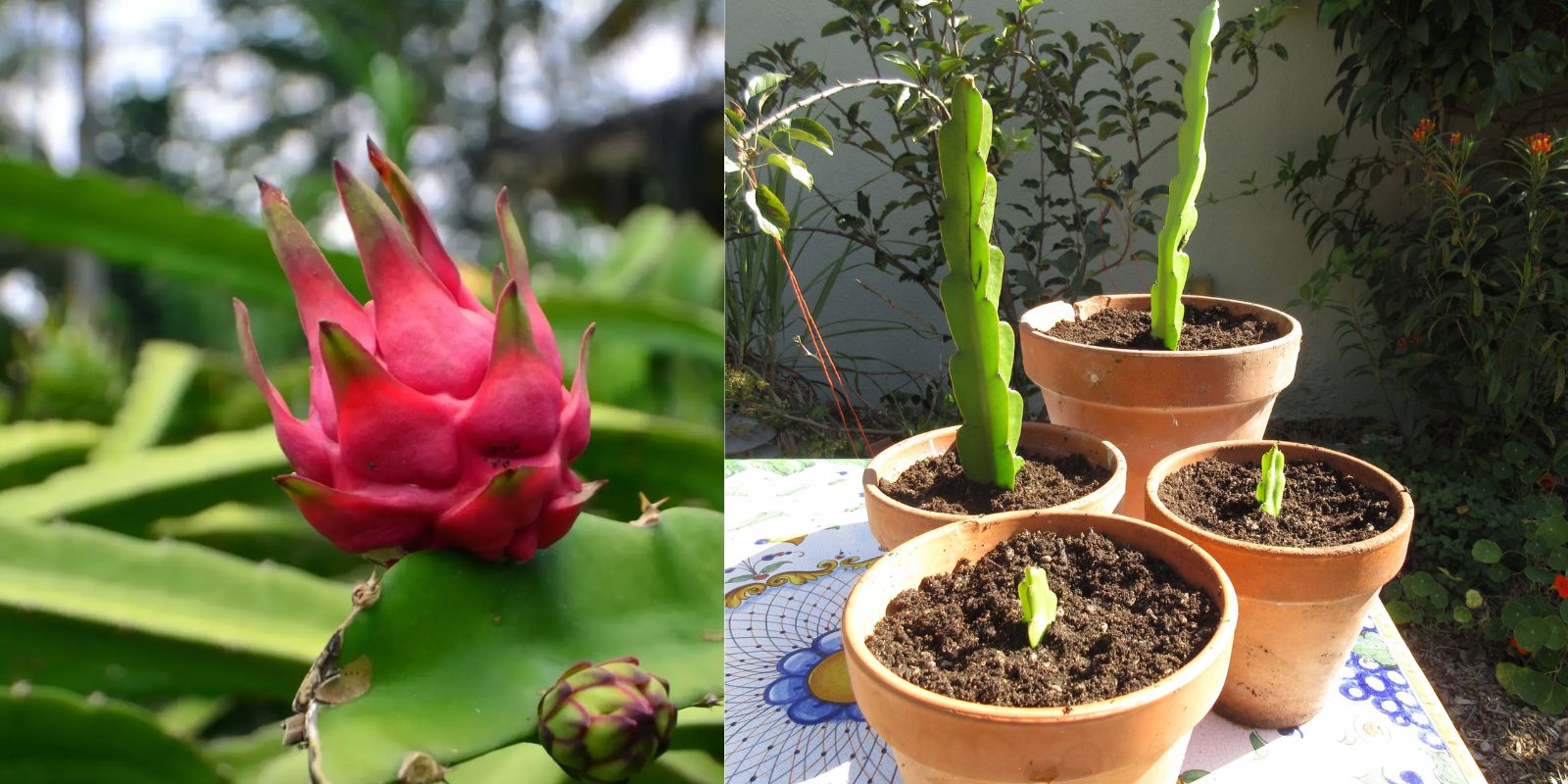Dragon fruit, or pitaya, is a visually stunning tropical fruit with a sweet, slightly tangy flavor. Its vibrant pink or yellow skin, dotted with green scales, and speckled white or red flesh make it a popular choice for health-conscious gardeners. Cultivating this unique fruit is easier than you might think, provided you follow some tried-and-true methods. In this guide, we’ll dive deep into 8 essential tactics to help you grow the tastiest dragon fruit in your garden or indoor space.
1. Choose the Right Variety for Your Climate
Not all dragon fruit plants are created equal. The most common types are:
- Hylocereus undatus (white flesh): Ideal for cooler or temperate climates.
- Hylocereus costaricensis (red flesh): Thrives in warmer regions.
- Hylocereus megalanthus (yellow skin): Prefers tropical climates but can adapt to controlled environments.
Why It Matters:
Selecting the right variety ensures your plant can withstand the local environment, producing sweeter and healthier fruit.
2. Provide Plenty of Sunlight
Dragon fruit plants are cacti, meaning they love the sun. Aim for:
- 6–8 hours of direct sunlight daily if planted outdoors.
- Bright, indirect sunlight if grown indoors or in a greenhouse.
Pro Tip:
If growing indoors, use grow lights to supplement natural light, especially during the shorter days of winter.
3. Use Well-Draining Soil
Dragon fruit roots dislike standing water, which can lead to root rot. Use soil with the following characteristics:
- Sandy or loamy texture.
- Rich in organic matter.
- A slightly acidic to neutral pH (6.0–7.0).
DIY Soil Mix:
Combine equal parts potting soil, sand, and compost to create the perfect mix.
4. Water Wisely
While dragon fruit plants are drought-tolerant, proper watering is key for fruit development.
- Water deeply but infrequently, allowing the soil to dry out between watering sessions.
- During flowering and fruiting, increase watering slightly to encourage healthy growth.
Warning:
Overwatering can cause fungal issues and lower fruit quality, so monitor soil moisture closely.
5. Prune Regularly
Dragon fruit plants grow vigorously, often producing sprawling stems that can drain energy from fruit production.
- Trim excess or damaged stems using clean, sharp shears.
- Remove any shoots that grow away from the support structure.
Why Pruning Matters:
Pruning focuses the plant’s energy on developing flowers and fruit, resulting in larger, tastier harvests.
6. Support the Plant
Dragon fruit plants are natural climbers and require sturdy support to thrive.
- Use a trellis, stake, or post to guide the plant’s growth.
- Secure the stems with soft ties to prevent damage.
Bonus Tip:
Ensure the support structure is at least 4–6 feet tall to accommodate the plant’s mature size.
7. Fertilize Periodically
A balanced diet is essential for dragon fruit plants to produce their best fruit.
- Use a balanced fertilizer with a higher ratio of potassium (K) and phosphorus (P) during the fruiting stage.
- Apply fertilizer every 4–6 weeks during the growing season.
Natural Fertilizer Options:
- Banana peel compost for potassium.
- Bone meal for phosphorus.
- Fish emulsion for overall nutrients.
8. Watch for Pests and Diseases
Dragon fruit plants are relatively hardy, but they’re not immune to problems. Common issues include:
- Pests: Aphids, mealybugs, and scale insects.
- Diseases: Root rot, anthracnose, and stem blight.
How to Protect Your Plant:
- Use neem oil or insecticidal soap to control pests.
- Ensure proper drainage and airflow to prevent fungal diseases.
- Remove affected areas promptly to stop the spread of infection.
Harvesting and Enjoying Your Dragon Fruit
Dragon fruit is ready to harvest about 27–33 days after flowering when the fruit reaches full color and the spines dry out. Gently twist the fruit to detach it from the plant.
Conclusion
Growing dragon fruit may seem exotic, but it’s surprisingly simple with the right approach. By providing ample sunlight, well-draining soil, and proper care, you’ll enjoy a bountiful harvest of sweet, nutritious dragon fruit in no time.
Have you grown dragon fruit before? Share your tips and success stories below! 🌱🍓
#DragonFruit #TropicalGardening #OrganicGardening #GardeningGoals #UrbanFarming #FruitGardening

